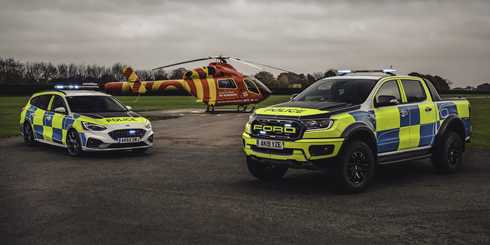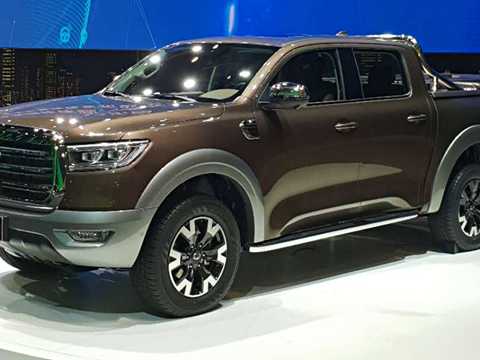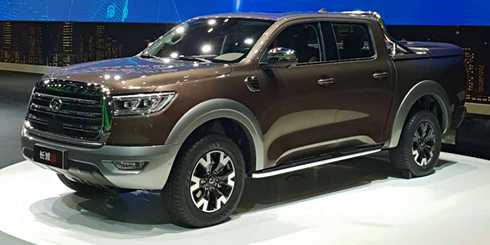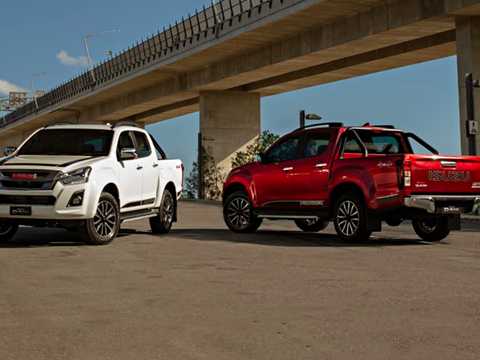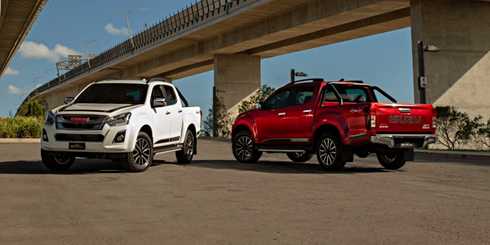Aussies love outdoor adventures and recreation and outdoor recreation activities often require a ute like the Mazda BT50.
Hauling the boat from the H20, hitting the bush camping spots and finding a trail for your bike all require the attributes which make utes a part of the Australian lifestyle. No wonder a ute (the Toyota HiLux) is often Australia’s best-selling vehicle outright.
In dual-cab format, the Mazda BT50 is ideal for families – here in one car you can haul five people and the recreational equipment you need. And take it from us, the Mazda BT50 really is the top of the class.
Mazda BT50 XTR Dual Cab 4x4 Overview
Like others, Mazda’s BT50 ute range is massive but this time around www.carshowroom.com.au tested the upscale XTR Dual Cab 4x4 which is priced at $50,890. Of course the Mazda BT50 range starts lower than that at $32,590 while only the range-topping GT model is better equipped than the XTR tested – and it stretches from $50,718 to $52,710.
Amongst its extras, XTR specification adds to the MazdaBT50 extras such as 17-inch alloy wheels, front fog-lights, alloy side steps, satellite navigation, leather-wrapped steering wheel and gear-lever and some extra chrome.
Mazda BT50 XTR Dual Cab 4x4 Engine
Our Mazda BT50 Dual Cab was powered by one of our favourite engines – the 3.2-litre in-line five-cylinder turbo-diesel. With 147kW of power at 3,000rpm and peak torque of 470Nm from 1,750-2,500rpm this is one of the very best engines in this league.
And with that flat torque curve, this engine is perfect for the nuances of ute work – off-road going, trailer-towing and the like.
Mazda’s first five-cylinder engine runs an alloy cylinder head and common-rail high-pressure direct injection.
Impressively refined at all speeds, the Mazda BT50 XTR 4x4 Dual Cab six-speed automatic we tested returns combined-cycle fuel consumption of 9.2l/100kms.
Mazda BT50 XTR Dual Cab 4x4 The Interior
Yes there’s the Mazda three-spoke steering wheel, the air-vents and instruments are different, as are the finishes, but of course much of the BT50’s interior comes straight from the Ford Ranger. And that’s a good thing – lots of space, nice driving position (although there’s no reach adjustment for the steering wheel) and there are certainly some quality materials.
The XTR model tested steps-up with a leather-wrapped steering wheel and gear-lever, satellite navigation, lumbar adjustment for the drivers’ seat and dual-zone climate-control air-conditioning amongst its extras.
All things considered you’re comfortable up-front and those is the rear are treated well too. If you often use the rear seats, Mazda BT50 ‘Dual Cab’ makes much more sense than say the ‘Freestyle’ model.
Mazda BT50 XTR Dual Cab 4x4 Exterior & Styling
Mazda offers the BT50 in single cab, ‘Freestyle” and dual-cab configurations. Our XTR model Dual Cab provided a rear tub 1,549mm in length which is comparable with segment rivals.
In the looks department, the challenge for Mazda’s team in Hiroshima, Japan was how to inject some ‘Zoom-Zoom’ into a vehicle already largely designed by Ford in Melbourne, Australia. The result is a unique look - certainly bold in the front-end – which meets the objective of ensuring the BT50 is instantly differentiated from its Ranger cousin.
Mazda tossed the traditional boxy ute look into the trash and delivered the BT50 burnishing contours and curves, boomerang-themed headlights and a curved five-point grille. The front bumper is thick and, in the case of XTR model, includes neat recesses for the fog-lights.
Viewed from the side, the Mazda BT50 XTR shows-off its elongated dimensions (like the Ford Ranger, the 3,220mm wheelbase is longest in-class). And the prominent wheel arch bulges of this design give some curves which are often lacking in utes.
Controversial at launch, time has softened the rear-end styling of the Mazda BT50 with its large tail-lights split between the tailgate and sides. Cleverly the parts of the lights on the tailgate are reflectors and don’t contain bulbs so functionality is not decreased if you have a long load which requires driving with the tailgate down.
Mazda BT50 XTR gains good-looking 17-inch alloy wheels.
Mazda BT50 XTR Dual Cab 4x4 On The Road
Mazda BT50 (and the Ford Ranger) are pretty much unanimously regarded as the ‘go-to’ utes for driving dynamics. That’s understandable as they’re the newest designs and they were engineered and developed in Australia by Australians.
And that’s impressive when you consider the BT50 is a full-on ladder frame ute with a massive towing capacity of 3,350kgs. Yes you can have a hard-working ute which doesn’t short-change in driving dynamics.
That comes from smart work for calibration of the wishbone front suspension, live rear axle and rear leaf springs. But a big part if that remarkable 3.2-litre, five-cylinder turbo-diesel engine.
Sure, delivering its 147kW/470Nm from as low as 1750rpm can cause the rear-end to get lively with clumsy use of the right foot in wet conditions. But equally when the BT50 is burdened with a massive load, you’re not left feeling like the whole world and their grandmothers are passing you when climbing hills.
Speaking of hills, we did put the Mazda BT50 XTR 4x4 Dual Cab over our usual high-speed mountain roads test loop just to verify nothing had changed since our last review. Nope – this thing remains one of the very best utes for driving dynamics.
Use of the old ‘car-like’ moniker is over-done when testing utes – the BT50 is big, uses a ladder chassis and is designed for hauling loads and going off-road. So it’s got more body roll than an MX-5 but let’s see an MX-5 drag your boat up the greasy ramp after long day fishing.
What it does better than every other ute (except the Ford Ranger of course) is point and steer. The Aussie-developed utes and just that bit more responsive to movements of the tiller and are better balanced mid-turn when you crack the whip.
Mazda BT50 XTR Dual Cab 4x4 Issues
With dual cab utes increasingly doing double duty as family vehicles, the focus is right on the rear seats. It must be said the Mazda BT50 (and Ford Ranger) fall a little flat in that department – literally – with seats a tad lacking in support when you’re in tight corners.
Mazda BT50 XTR Dual Cab 4x4 Verdict
As mentioned in previous ute reviews, for us the Mazda BT50 and Ford Ranger stand-out as the best of the ‘new breed’. This was reinforced after our week in the BT50’s XTR model Dual Cab 4x4.
OK, we’re the first to admit the Mazda BT50 is no shrinking violet in the looks department. It’s big and it’s purposeful but, hey this is ute we’re talking about, not a sports car.
What Mazda (and Ford) have done better than the rest is deliver a ute which is nice to drive both loaded and empty. Still a bit bouncy when the cargo area is empty, but compared to previous generations the latest BT50 confidently allows deletion of the chiropractor’s number from your speed-dial set-up.
Of course over-arching all of this is that 3.2-litre, five-cylinder turbo-diesel – enough power to pull the scowl from your mother-in-law’s face but nicely refined even at freeway speeds.
And in XTR guise, the Mazda BT50 introduces some luxury and tech which are on-trend for today’s buyers. Good work Mazda.
Mazda BT50 XTR Dual Cab 4x4 The Competition
The Australian engineered and developed Ford Ranger is of course a close relative of the Mazda BT50. The choice gets down styling (we like the American pick-up looks of the Ranger) and specific deals/offers from either company.
Either way you’re getting the very latest of these sorts of vehicles, engineered and developed in Australia. For driving dynamics, the Mazda BT50 and Ford Ranger are a step ahead of the competition.
Toyota HiLux dominates this market segment and in fact dominates the roads in some parts of Australia like FNQ. So it commands respect. But the facts are the current generation HiLux is getting on a bit and when you’re numero uno, the opposition bust their you-know-whats to beat you – which is what Mazda/Ford did with the BT50 and Ranger twins. Notwithstanding, dollar-for-dollar and spec-for-spec the Toyota HiLux still reigns over this segment with a dominance which is unmatched anywhere.
Isuzu D-Max is definitely on our list. Isuzu doesn’t bother with passenger cars, its focus is on utes and SUVs and it does them very well. Like the Toyota HiLux, you need to cross-reference features and capabilities (like towing and cargo capacities etc) specific to your needs against the Mazda BT50. But take it from us, we’ve seen the Isuzu operation in Thailand (quality is top-notch) and we’ve driven D-Max models in all sorts of conditions (we know they can handle the tough stuff…and that’s what utes are for).




















